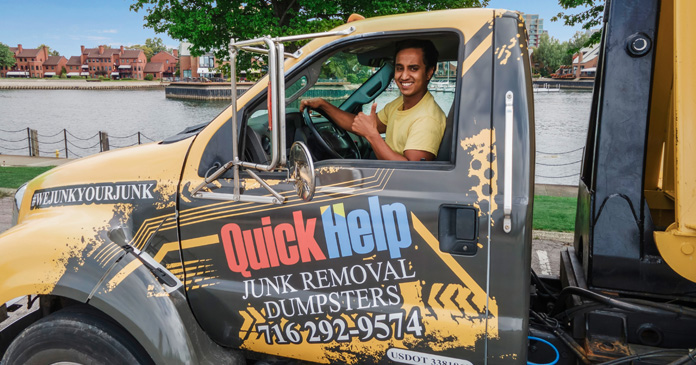You know that feeling when you press the garage door opener and immediately feel embarrassed about what’s behind it? That moment when you realize you’ve been parking in the driveway for so long that you’ve forgotten your garage was originally meant for cars?
You’re not alone. The average American garage is so packed with stuff that only 25% of homeowners can actually fit their car inside. What started as convenient storage for “just a few things” has morphed into an impenetrable wall of boxes, broken appliances, exercise equipment, and items you can’t even identify anymore.
But here’s the thing—your garage wasn’t supposed to become a junk warehouse. It was designed to be functional space that adds value to your home and makes your life easier. Right now, it’s probably doing the opposite.
I’ve seen garages so packed that homeowners needed a map to find anything. I’ve watched people buy duplicates of items they already owned because they couldn’t locate them in the chaos. And I’ve helped transform these disaster zones back into functional spaces that people actually want to use.
The process isn’t as overwhelming as it seems. You don’t need to rent a dumpster or take a week off work. You just need a clear strategy and the willingness to make some tough decisions about what’s actually worth keeping.
Let me show you exactly how to reclaim your garage in five manageable steps that you can complete over a few weekends.
Why Garages Become Junk Magnets
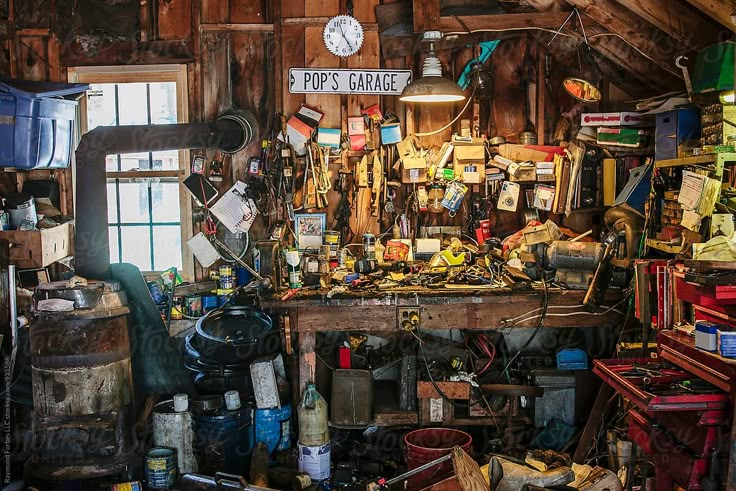
The Convenience Trap
Garages are too convenient for their own good. They’re attached to your house, protected from weather, and have that big door that makes it easy to toss things inside “just for now.” What starts as temporary storage becomes permanent clutter.
The problem compounds because garages don’t have the same visibility as your living spaces. You can ignore the mess for months or years because you’re not looking at it every day. Out of sight, out of mind—until you need something and can’t find it.
Unlike closets or basements, garages also lack natural storage systems. There are no built-in shelves or organizational features, so everything gets piled on the floor or stacked against walls in unstable towers of stuff.
The Seasonal Accumulation Cycle
Garages become repositories for seasonal items that get used once a year, then forgotten. Christmas decorations, summer toys, winter equipment—all perfectly reasonable to store, but they pile up over time.
The real problem is that most people don’t have systems for rotating seasonal items. Instead of organized storage, you get archaeological layers of stuff from different seasons and years all mixed together.
Add in the fact that garages are where broken items go to “be fixed someday,” and you’ve got a recipe for chaos. That lawnmower that needs a new spark plug, the bike with the flat tire, the appliance that just needs “one small part”—they all end up creating permanent obstacles in your garage.
The Emotional Attachment Factor
Garages are where we store items we’re not ready to get rid of but don’t really need. That exercise equipment we swore we’d use, the tools we bought for projects we never started, the children’s toys they’ve outgrown but have sentimental value.
These emotional attachments make garage cleanouts particularly challenging. Unlike obvious trash, everything in your garage probably has a story or a “someday” purpose that makes it hard to discard.
Step 1: The Total Evacuation Strategy
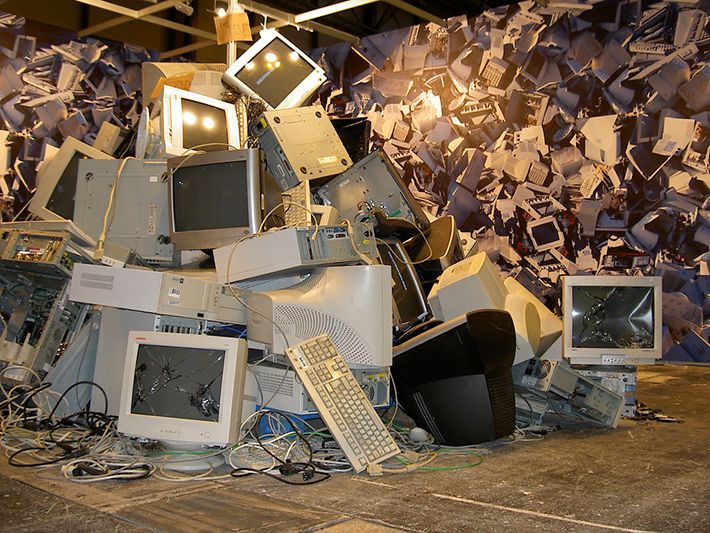
Why Everything Must Come Out
The biggest mistake people make is trying to organize their garage while everything is still inside. You can’t see what you’re dealing with, you can’t clean properly, and you’ll just end up moving piles around without making real progress.
Total evacuation forces you to confront every single item and make conscious decisions about what goes back in. It also lets you see your garage as an actual space instead of a storage container.
Choose a day with good weather and plan to use your driveway, yard, or even a rented storage unit temporarily. You need enough space to spread everything out so you can see what you’re working with.
The Evacuation Process
Start early in the morning and work systematically from one side of the garage to the other. Don’t try to organize as you go—just get everything out and into the light where you can see it clearly.
Wear work gloves and safety glasses. You’ll be handling items that have been sitting in dusty corners for years, and there might be sharp edges or broken pieces you don’t expect.
Have a trash bag ready for obvious garbage you discover during the evacuation. You’ll find more actual trash than you expect—broken items, empty containers, and things that have deteriorated beyond usefulness.
What You’ll Discover
Most people are shocked by what they find during evacuation. Items they forgot they owned, duplicates of things they recently purchased, and valuable items they thought were lost forever.
You’ll also discover how much genuine junk has accumulated. Broken tools, expired products, and items so covered in dust and grime that they’re beyond salvaging.
This discovery phase is crucial because it gives you a realistic picture of what you’re dealing with. Many people realize that their garage wasn’t as full of “important stuff” as they thought.
Step 2: The Ruthless Sorting System

The Four-Category Method
With everything out of your garage, you need a systematic approach to sorting. Create four distinct areas: Keep, Donate/Sell, Trash, and Undecided.
The “Keep” pile should be for items you’ve used in the last year or will definitely use in the next year. Be honest about this—if you haven’t touched something in over a year, you probably don’t need it.
“Donate/Sell” is for items in good condition that you no longer need but someone else might value. This includes outgrown sports equipment, tools you never use, and duplicate items.
“Trash” is for broken items, expired products, and anything that’s deteriorated beyond usefulness. Don’t feel guilty about throwing away items that can’t be repaired or repurposed.
“Undecided” is for items you’re genuinely unsure about. This pile should be small—if you can’t quickly decide whether something is worth keeping, it probably isn’t.
The Decision Framework
For each item, ask yourself three questions: When did I last use this? What would happen if I didn’t have it? What would it cost to replace if I needed it again?
This framework helps you make rational decisions instead of emotional ones. That exercise bike you haven’t used in three years? If you needed exercise equipment, you’d probably buy something different anyway.
Be especially ruthless with duplicates. You don’t need five screwdrivers or three rakes. Keep the best version of each tool and let the rest go.
Handling Sentimental Items
Sentimental items are the hardest to deal with because they’re not about utility—they’re about memory and emotion. But garages aren’t museums, and storing everything sentimental will keep you from having a functional space.
Consider taking photos of sentimental items before letting them go. You’ll preserve the memory without keeping the physical object. Sometimes the photo is all you really need.
For items you absolutely can’t part with, commit to proper storage. If something is important enough to keep, it’s important enough to store correctly in a climate-controlled environment.
Step 3: The Deep Clean and Repair Phase
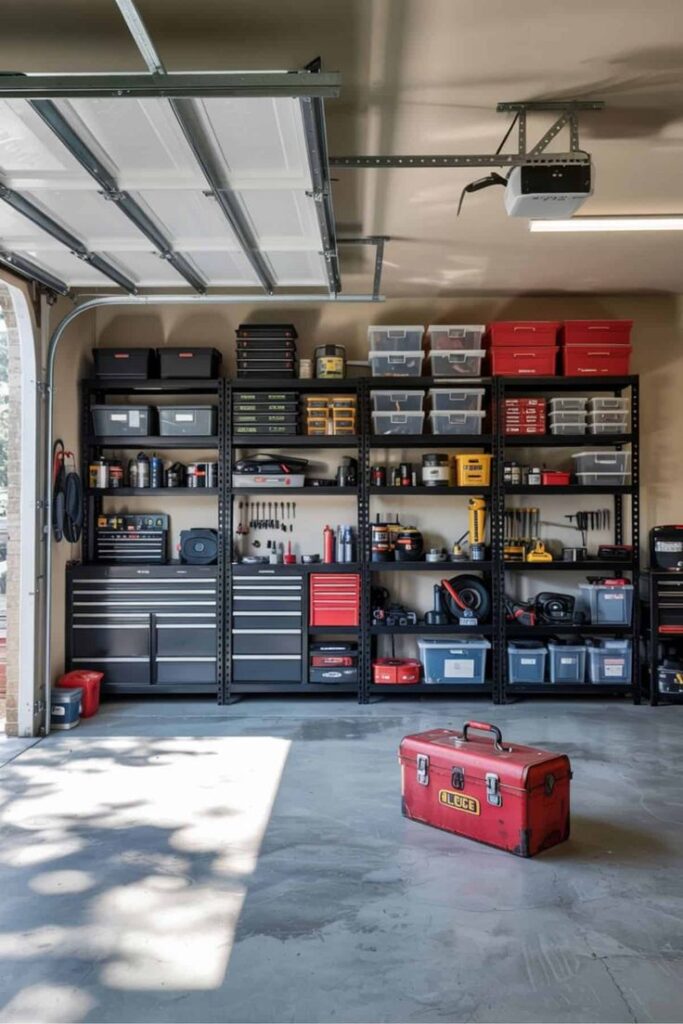
Why Cleaning Matters
With your garage empty, you can finally see what you’re working with. Most garages need more than just sweeping—they need deep cleaning to remove years of accumulated dirt, oil stains, and grime.
Start with the ceiling and work your way down. Remove cobwebs, dust light fixtures, and clean any windows. You want to create a space that feels fresh and inviting, not like a storage shed.
Pay special attention to the floor. Oil stains from cars, grease from tools, and general grime make garage floors slippery and uninviting. A clean floor makes the entire space feel more usable.
Common Repairs You’ll Need
Empty garages often reveal maintenance issues that were hidden by clutter. Check for holes in walls, damaged drywall, and problems with electrical outlets or lighting.
Garage doors often need attention after years of neglect. Check the tracks, lubricate moving parts, and test the safety features. A properly functioning garage door makes the space more pleasant to use.
Look for signs of water damage, pest infestation, or structural problems. These issues are easier to address when the garage is empty than after you’ve restocked it with organized items.
Lighting and Electrical Upgrades
Most garages have inadequate lighting, which contributes to their use as storage dumps rather than functional spaces. Consider upgrading to LED fixtures that provide better illumination.
Add electrical outlets if needed. Having power where you need it makes the garage more functional for projects and tool use. This is also a good time to check that existing outlets are GFCI protected.
Good lighting and adequate electrical service transform a garage from a storage space into a workshop where you actually want to spend time.
Step 4: The Strategic Organization System
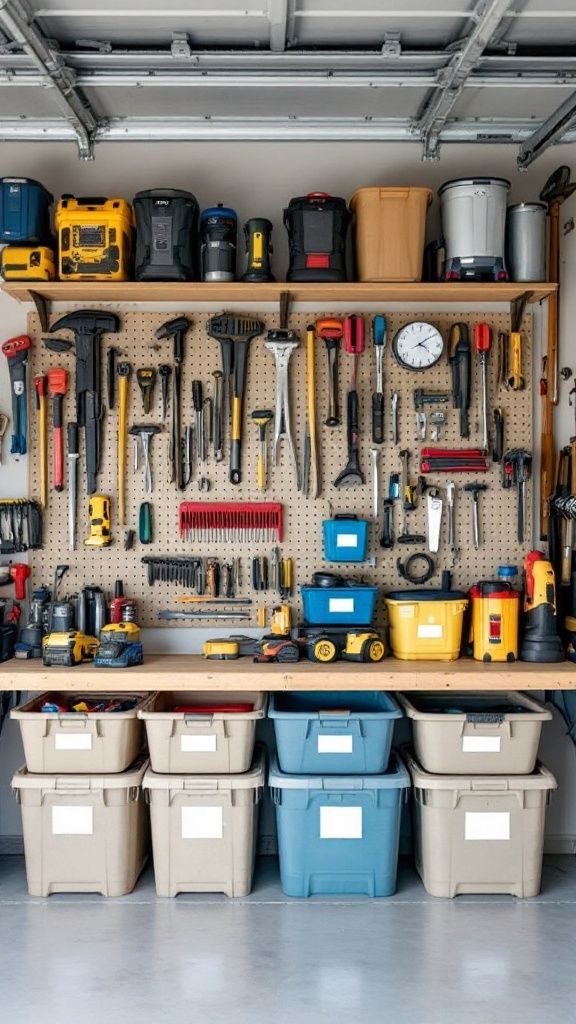
Zoning Your Garage
Don’t just put everything back randomly. Create zones for different types of items: automotive supplies, garden tools, sports equipment, seasonal decorations, and household storage.
Each zone should have dedicated storage solutions appropriate for the items it contains. Garden tools need hooks and hangers, while automotive supplies need shelving and containers.
Keep frequently used items at eye level and easily accessible. Seasonal items can go higher up or in less convenient locations since they’re used less often.
Vertical Storage Solutions
Garages have lots of vertical space that most people don’t use effectively. Wall-mounted storage systems, ceiling-mounted platforms, and tall shelving units maximize your storage capacity.
Pegboards are excellent for tools and frequently used items. They keep things visible and accessible while getting them off the floor and workbenches.
Overhead storage is perfect for seasonal items and things you don’t need regular access to. Just make sure weight limits are respected and items are properly secured.
The Container Strategy
Invest in quality storage containers that stack well and protect contents from moisture and pests. Clear containers let you see what’s inside without opening them.
Label everything clearly. Even if you think you’ll remember what’s in each container, you won’t. Good labeling saves time and prevents duplicate purchases.
Use uniform container sizes when possible. This makes stacking more stable and efficient while creating a cleaner, more organized appearance.
Creating Functional Work Areas
If you have space, create a dedicated work area with a sturdy workbench and good lighting. This gives you a place to handle repairs and projects without cluttering the entire garage.
Include storage for tools and supplies near your work area. Having everything within reach makes projects more enjoyable and likely to be completed.
Consider adding a small sink if plumbing is available. This makes cleanup easier and allows you to handle messy projects without tracking dirt into your house.
Step 5: The Maintenance and Prevention System
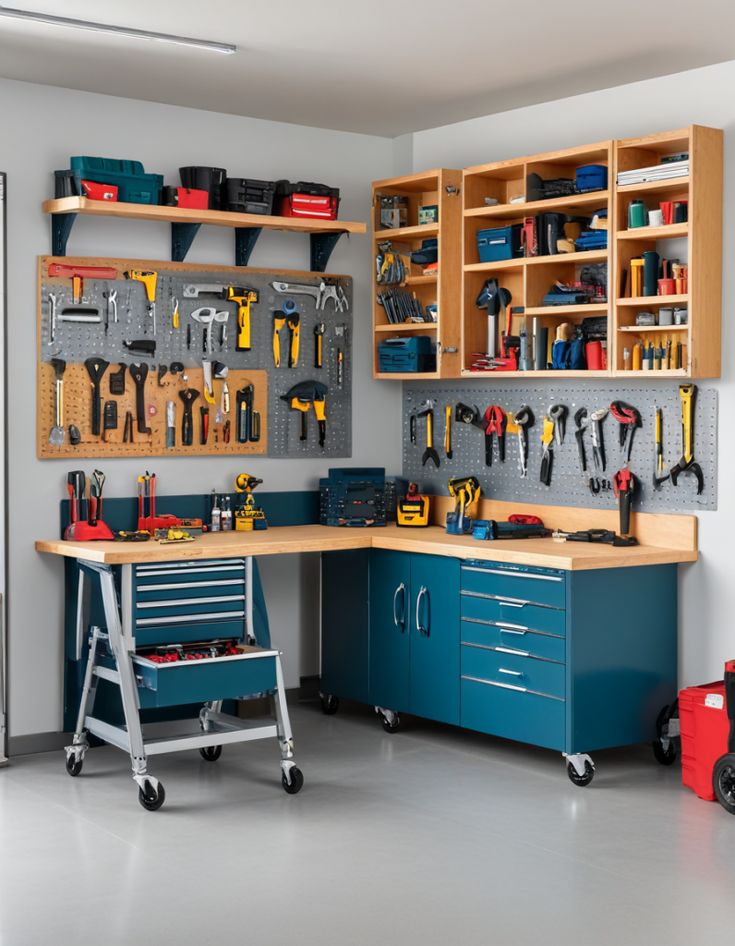
The Monthly Maintenance Routine
Schedule a monthly garage maintenance session to prevent clutter from building up again. This doesn’t need to be a major cleaning—just 30 minutes to put things back where they belong and address any new accumulation.
During these sessions, check that your organization systems are working. If items consistently end up in the wrong places, your system might need adjustment.
Use this time to identify and address small problems before they become big ones. That small oil stain is easier to clean than a large one that’s been sitting for months.
The One-In-One-Out Rule
Prevent accumulation by implementing a one-in-one-out policy for your garage. When you bring something new into the space, something old should leave.
This rule forces you to make conscious decisions about what you’re keeping and prevents the gradual accumulation that leads to clutter.
Be especially vigilant about seasonal items. When you put away Christmas decorations, that’s a perfect time to evaluate what you actually used and what can be donated.
Creating Systems That Work
Your organization system needs to be simple enough that family members will actually use it. Complicated systems that require lots of maintenance inevitably fail.
Make sure everything has a designated place and that those places are clearly marked. Items without homes inevitably end up in piles on the floor.
Consider the traffic flow in your garage. Frequently used items should be easy to access, while storage items can be in less convenient locations.
Seasonal Rotation Strategies
Develop a system for rotating seasonal items so they don’t all compete for the same space. Winter items can be stored during summer and vice versa.
Use your monthly maintenance sessions to prepare for seasonal changes. As summer approaches, move winter items to higher or less accessible storage areas.
Keep an inventory of seasonal items so you don’t forget what you have. This prevents duplicate purchases and helps you plan storage space.
Common Obstacles and How to Overcome Them
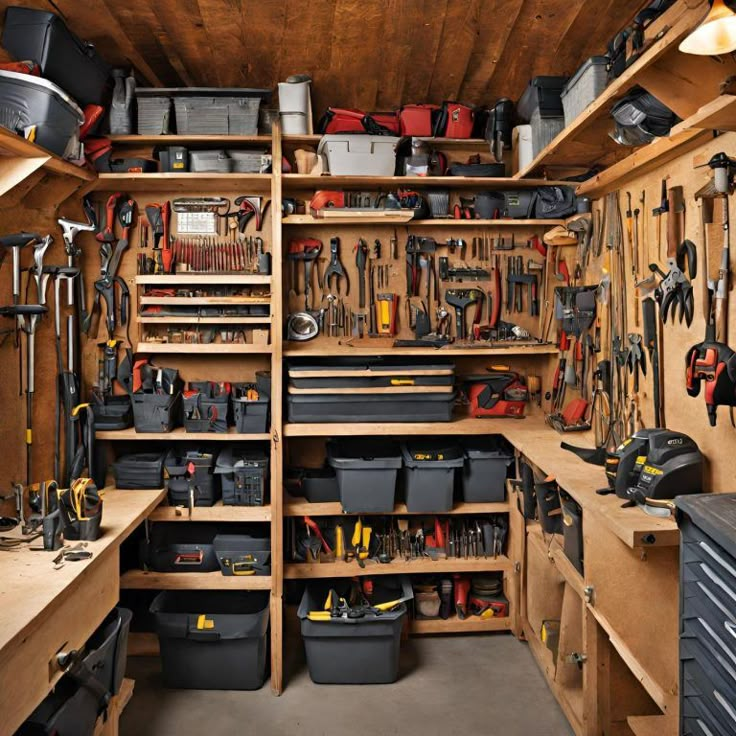
The Overwhelm Factor
The biggest obstacle to garage organization is feeling overwhelmed by the scope of the project. Remember that you don’t have to complete everything in one day.
Break the project into smaller phases if needed. You might evacuate and sort one weekend, then clean and organize the next. Progress is more important than speed.
Focus on one category at a time rather than trying to handle everything simultaneously. Complete all the automotive items before moving to sports equipment, for example.
Family Resistance
Family members might resist changes to “their” storage areas. Involve them in the process and get their input on the organization system.
Make sure everyone understands where things go and why the system works. If people don’t buy into the organization, they won’t maintain it.
Consider giving each family member their own designated storage area that they’re responsible for maintaining. This prevents conflicts and creates accountability.
Weather and Timing Challenges
Garage cleanouts require good weather for evacuation and sorting. Plan your project around weather forecasts and have backup dates if conditions aren’t suitable.
Consider seasonal timing. Spring and fall are ideal because temperatures are moderate and you can work comfortably for extended periods.
If you live in an area with extreme weather, you might need to rent temporary storage or work in phases to avoid exposing items to harsh conditions.
The Perfectionism Trap
Don’t let perfectionism prevent you from starting or completing your garage organization project. An imperfect system that you actually use is better than a perfect system that’s too complicated to maintain.
Focus on functionality over appearance. Your garage doesn’t need to look like a magazine photo—it needs to work for your family’s needs.
Remember that organization is an ongoing process, not a one-time event. You can always refine and improve your systems over time.
Measuring Success and Maintaining Progress
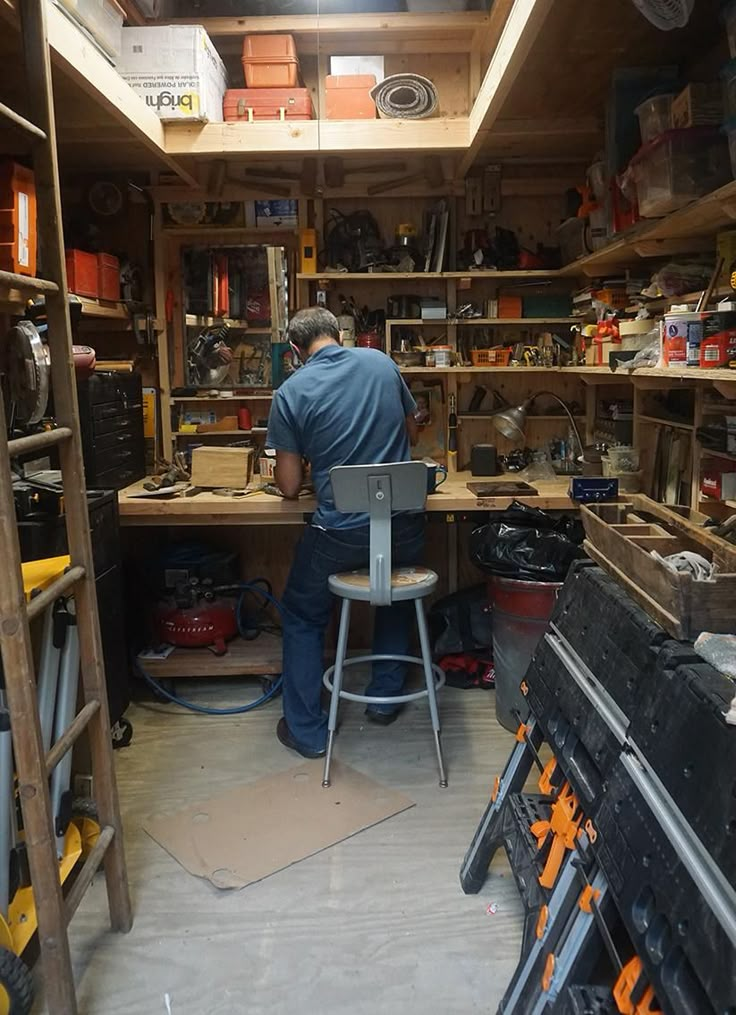
Setting Realistic Goals
Success doesn’t mean having the most organized garage in the neighborhood. It means having a functional space that serves your needs and doesn’t stress you out.
Set specific, measurable goals: “I want to park my car in the garage” or “I want to find any tool within two minutes.” These concrete objectives keep you focused.
Celebrate progress along the way. Getting your garage 80% organized is a massive improvement over where you started, even if it’s not perfect.
Creating Accountability
Share your goals with family members or friends who can help keep you accountable. Take before and after photos to document your progress.
Consider joining online communities or local groups focused on organization and decluttering. Having support from others facing similar challenges can be motivating.
Set up regular check-ins with yourself to assess how your systems are working and what adjustments might be needed.
The Long-Term Vision
Think about how you want to use your garage beyond just storage. Do you want workshop space? A home gym area? Room for hobbies? This vision will guide your organization decisions.
Consider the impact of a well-organized garage on your daily life. No more searching for tools, no more buying duplicates, no more feeling stressed when you open the garage door.
Remember that an organized garage adds value to your home and makes your entire property more functional and enjoyable.
Making It Stick: Long-Term Success Strategies
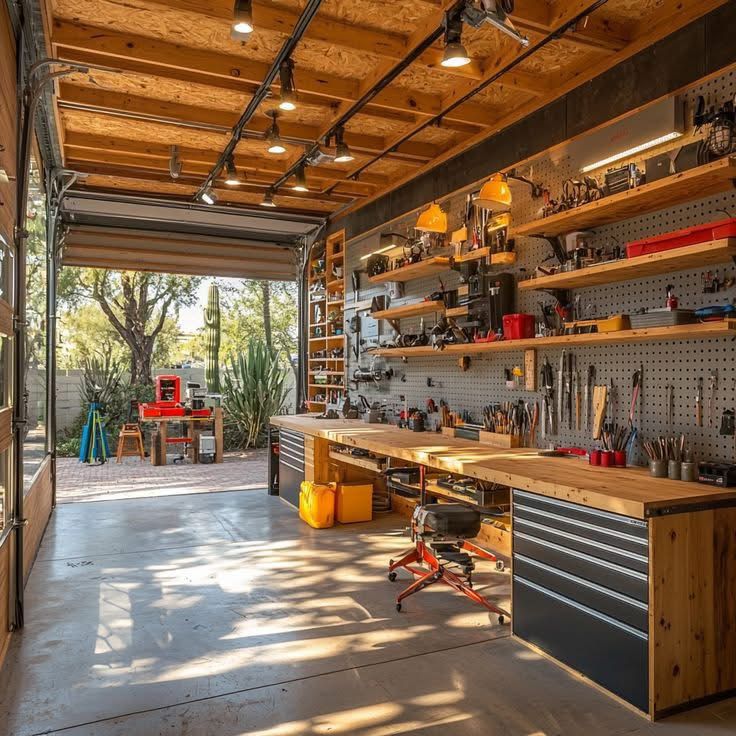
Building Good Habits
The key to long-term garage organization is building habits that maintain your systems. This means always putting things back where they belong and addressing problems immediately.
Create simple routines that become automatic. Always hang tools on pegboards after use. Always put seasonal items in their designated areas. Always clean up after projects.
Make organization part of your regular home maintenance routine, just like changing air filters or cleaning gutters.
Teaching the System to Others
If you share your garage with family members, make sure everyone understands and can use your organization system. Provide clear instructions and examples.
Consider creating a simple map or guide that shows where different categories of items belong. This eliminates confusion and prevents items from ending up in the wrong places.
Be patient as family members adapt to the new system. It takes time for new habits to become automatic.
Continuous Improvement
Your organization system doesn’t have to be perfect from day one. Pay attention to what’s working and what isn’t, then make adjustments.
If certain items consistently end up in the wrong places, your system might need modification. The best organization system is one that people actually use.
Stay flexible and willing to adapt your approach as your needs change. What works for your family today might need adjustment next year.
Conclusion: From Chaos to Control
Reclaiming your garage isn’t just about organization—it’s about taking control of your space and your life. When you can park your car in the garage, find tools when you need them, and use your garage for its intended purposes, you’ve accomplished something significant.
The five-step process—evacuation, sorting, cleaning, organizing, and maintaining—works because it’s systematic and thorough. You’re not just moving clutter around; you’re making conscious decisions about what belongs in your space and creating systems to keep it organized.
Remember that this is a process, not a destination. Your garage will require ongoing maintenance and occasional reorganization as your needs change. But with the foundation you’ve built, these future adjustments will be minor tweaks rather than major overhauls.
The transformation from junk-filled storage space to functional garage affects more than just your parking situation. It reduces stress, saves money on duplicate purchases, and creates space for activities you actually enjoy. Your garage can become a workshop, hobby space, or simply a place where you’re not embarrassed to open the door.
Start with step one this weekend. Empty out one section of your garage and see what you discover. You might be surprised by what you find—and by how good it feels to finally take control of your space. Your future self will thank you for the effort you put in today.
How Quick Help Junk Removal Can Help You Reclaim Your Garage

Transforming your garage isn’t just about tidying up—it’s about reclaiming control of your home and your peace of mind. But when the clutter feels overwhelming, Quick Help Junk Removal is here to make the process easier.
From clearing out old furniture and broken tools to hauling away years’ worth of forgotten junk, our team helps you jump-start that five-step transformation—evacuation, sorting, cleaning, organizing, and maintaining. We’ll handle the heavy lifting so you can focus on organizing what matters most.
We offer fast, affordable junk pickup in Buffalo, Tonawanda, and nearby areas—no need for a dumpster, and no stress about disposal. Whether you’re uncovering a future workshop, a hobby space, or just making room to park your car again, we’ll help you make it happen quickly and responsibly.
📞 Call or text us at (716) 292-9574 or (833) 784-2547
🌐 Book your garage cleanout today at quickhpjunkremoval.com
Let Quick Help Junk Removal take the junk off your hands—so you can take your garage (and your life) back.
